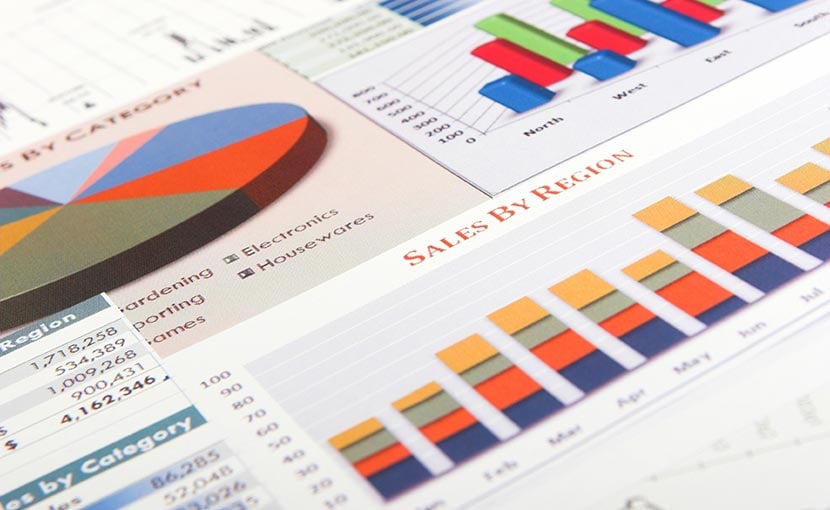Your Supply Chains Best Friend
Keith LaBotz - September 02, 2021

7 Ways to Improve Supply Chain Visibility
Is supply chain visibility going to the dogs?
You probably wonder what I’m getting at with this question, and it will become apparent after reading the story behind it. We’ll get to that as we look at 7 ideas that will improve supply chain visibility.
1. Ask Clear Questions
Visibility enables companies to make better decisions by answering questions about supply chain execution. The quality of these decisions depends upon the quality of the questions.
I intentionally asked an obscure question to illustrate an important point. It doesn’t matter if I understand my own question - its meaning must also be clear to you if I want to elicit an accurate answer. This often requires providing context or stating the purpose of the question.
The same is true for supply chain visibility. Unclear questions lead to unclear answers, which results in unreliable decisions.
2. Ask Relevant Questions
 Now that we know how to ask, we need to look at what to ask. Better decisions depend on accurate answers to relevant questions. Time must be invested to identify these questions before beginning any visibility effort. Once the questions are known, additional effort is required to acquire the data necessary for answering them.
Now that we know how to ask, we need to look at what to ask. Better decisions depend on accurate answers to relevant questions. Time must be invested to identify these questions before beginning any visibility effort. Once the questions are known, additional effort is required to acquire the data necessary for answering them.
Formulating relevant questions requires understanding the decision-making when responding to supply chain exceptions and opportunities. Some forecasting, planning, routing, monitoring, risk management, transportation optimization solutions offer turnkey algorithms, saving you the work. With these solutions, you’ll spend less time formulating questions so you can get right to data collection with your visibility platform.
With a checklist of questions in hand, you can approach partners for the information you need. This involves more than asking for data - technical collaboration is required, so beware of the potential roadblock to your visibility plan.
3. Question Yourself
Now for the story behind my question to you. It’s about an unexpected lesson on supply chain visibility I learned from a friend and it changed my view.
My best friend is an expert in monitoring last-mile logistics. He was visiting me in my office while I was immersed in the world of Logistics 4.0, looking at how robotics, blockchain, AI, and IoT will change visibility and affect risks. I was drinking the vendors’ kool-aid, enjoying the buzz of future possibilities and promises of transparent supply chains that overflowed with real-time, granular data. What happened next was pure synchronicity.
The brown UPS truck pulls up to deliver a package, and with perfect timing, my friend seizes the moment to school me in last-mile visibility. I know what’s coming as he stands up with that look in his eyes. It’s always the same message, and I’m already reading his mind before he opens his mouth: “I don’t care about data or visibility. It’s about you, the driver, the package, and the truck.”
For some reason, I saw things differently this time. Maybe it was the sobering contrast of switching from future tech tunnel vision to watching the no-tech reality of the driver walking up to my front porch. Instead of analyzing the delivery experience, I was a character in the delivery drama, and I saw what my friend saw.
The only thing that mattered was the driver walking a few more steps, setting the package down, and knocking on my front door. Mission accomplished. What could visibility possibly add to improve this perfect scene?
Visibility had faded into the background like a supporting character in logistics infrastructure, alongside roadways, electricity, and the internet.
4. Visibility is a Means to an End
A primary goal of every supply chain is to optimize resources, which might even be the supreme idea for supply chain success. How does visibility promote this objective?
- Visibility does not change the outcome.
- Visibility is not data; its an interpretation of data
- Visibility affords potential for enabling decision-making;
- Visibility is not a feature that does something, but it can provide actionable data.
- Visibility allows us to see whether objectives will be met.
Visibility is a prerequisite for optimization - it’s a means to an end. The focus of discussions and plans for a visibility platform should be on the end goal.
5. Focus on Optimization Instead of Visibility
 Whatever we focus on receives the benefit of our attention. This is where my friend helped me. I’d been focusing on the wrong thing, treating visibility as a discrete capability that was separate from other supply chain processes. Some of that goes back to my engineering days, where we built apps dedicated to EDI and data transfers around other logistics apps.
Whatever we focus on receives the benefit of our attention. This is where my friend helped me. I’d been focusing on the wrong thing, treating visibility as a discrete capability that was separate from other supply chain processes. Some of that goes back to my engineering days, where we built apps dedicated to EDI and data transfers around other logistics apps.
Once I understood visibility as infrastructure, visibility became invisible. I could only envision apps that were optimizing the logistics process. The more clearly we focus on optimizing supply chain processes, the more connections we will make to increase optimization. This is a subtle point and I’m not sure I’ve expressed it clearly, but it’s important so I’ll risk that.
6. Focus on Situational Awareness
I define supply chain visibility as awareness, which I’ve explained as readiness to respond to changes. Plans and execution must adjust to changing conditions in order to meet stakeholder expectations and fulfill the countless system, business, and regulatory requirements. At its core, visibility should monitor conditions that could compromise these objectives.
7. Focus on Transportation
A supply chain visibility platform is analogous to a transportation network, delivering the right data to the right place at the right time. Interestingly, shipment-related data comprises a significant portion of the data found in a visibility platform.
Shipment data typically includes shipment packing details, delivery details, SKUs, shipment location, ETAs, customs clearance, container IDs, tracking numbers, and other useful information. In my opinion, a visibility platform should center around transportation logistics, and there are several reasons for this:
- Transportation is the most dynamic part of a supply chain.
- Transportation offers high-visibility, significant improvements with little investment.
- Transportation is the physical link between all partners in the supply chain.
- Transportation carriers are willing to provide shipment delivery and cost data.
- Transportation data easily maps to enterprise transactions and inventory.
Given these advantages, looking for a vendor with deep transportation experience is a good place to start. This is particularly beneficial for logistics solutions like flexis Transportation Planning and Scheduling solution. According to Robert Recknagel, VP Manufacturing and Logistics, flexis AG: “One of the best visibility platforms, project44, makes real-time data available for supply chain optimization. flexis Transportation Planning and Scheduling adds intelligence to this data, allowing our customers to reduce shipping costs, emissions and improve delivery performance. Our partnership with project44 makes it possible to correct bottlenecks and act on opportunities that are usually overlooked without real-time visibility. “
Conclusion
Hopefully, the insights offered will prove helpful for you. If you take anything away from this post, just remember we can learn new things from unexpected sources.
The lessons I shared came from an eighteen-pound, wild-eyed barking machine named Schatzie, who faithfully lets me know every time I get a delivery.
LATEST POSTS
- Understand Circular Economy in The Manufacturing Industry
- How Can Industry 4.0 IT Integration Be Achieved Smoothly?
- The Significance of Order Sequencing in Discrete Manufacturing
- How to improve your Supply Chain Management: The Power of Control Towers
- Optimizing Human Resource Scheduling in Manufacturing: A Technological Approach


